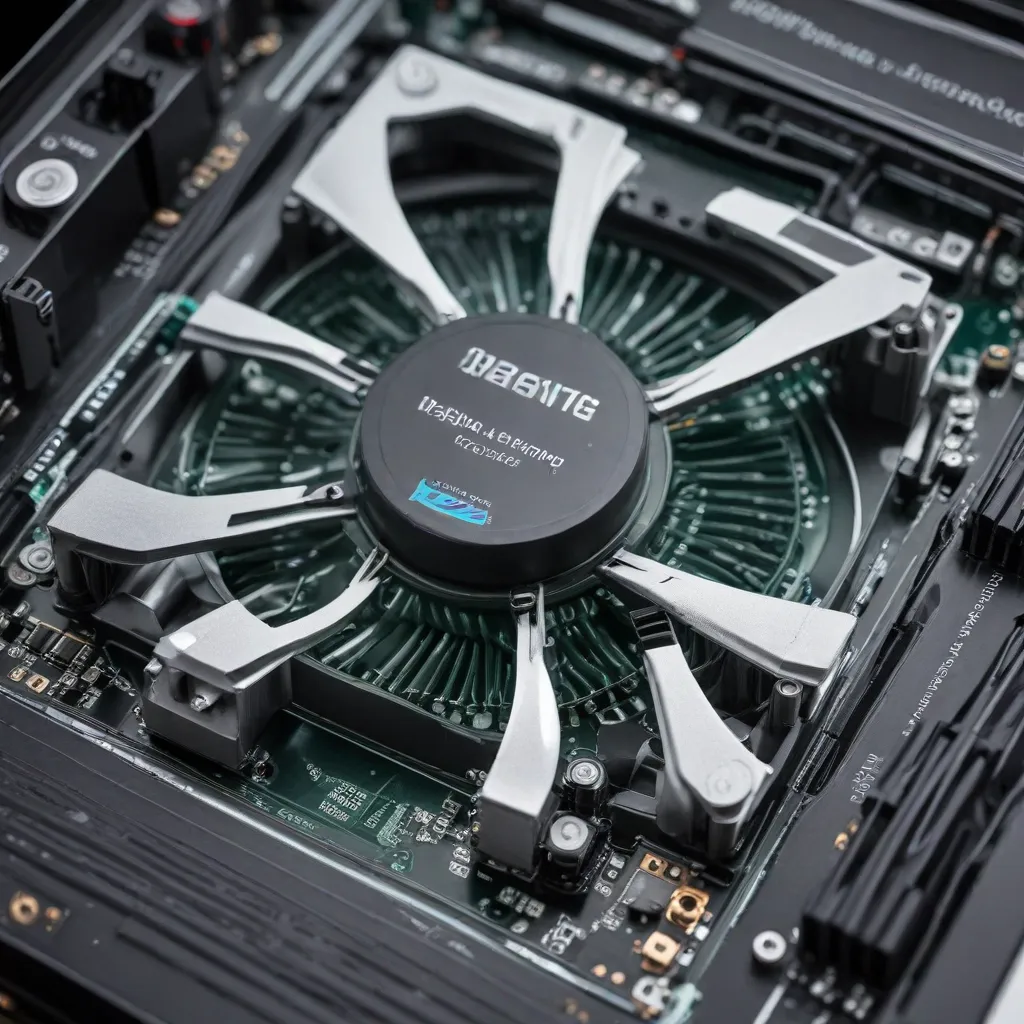
Understanding the Thermal Challenges of Machine Learning on Laptops
As an experienced IT professional, I’ve encountered many questions and concerns from professionals and students alike regarding the challenges of running intensive machine learning (ML) workloads on laptops. The reality is that laptops, while convenient and portable, often struggle to maintain optimal performance when subjected to the intense computational demands of training complex neural networks or processing large datasets.
One of the primary issues faced by laptop users engaged in machine learning is the tendency for the CPU and GPU to generate significant heat during prolonged training sessions. This heat buildup can lead to thermal throttling, where the system automatically reduces the clock speeds of the processor and graphics card to prevent overheating and potential damage. As a result, the machine’s performance can degrade, leading to slower training times, decreased model accuracy, and, in some cases, system crashes or instability.
Mitigating Thermal Challenges with Effective Cooling Solutions
Fortunately, there are several strategies and cooling solutions that can help laptop users maintain the performance of their machines during machine learning model training. Let’s explore some of the best options:
Laptop Cooling Pads and Stands
One of the simplest and most effective solutions is to use a dedicated laptop cooling pad or stand. These accessories typically feature multiple fans that draw hot air away from the laptop’s underside, improving airflow and heat dissipation. They often come with adjustable heights or tilting mechanisms to further optimize the airflow around the laptop.
When selecting a cooling pad, look for models with high-quality, quiet fans and a sturdy construction that can support the weight of your laptop. Some advanced cooling pads even incorporate additional features like USB hubs or temperature monitoring software to help you keep a close eye on your system’s thermal performance.
External GPU Enclosures
For laptops with limited dedicated graphics capabilities, an external GPU (eGPU) enclosure can be a game-changer. These devices allow you to connect a high-performance desktop-class GPU to your laptop, offloading the intensive graphics processing tasks from the laptop’s internal GPU.
eGPU enclosures often come with their own dedicated cooling systems, ensuring that the powerful external GPU can operate at optimal temperatures without causing thermal issues for the laptop itself. This approach can significantly improve the overall performance of your machine learning workloads, as the GPU is the primary workhorse for many ML algorithms.
When choosing an eGPU enclosure, consider factors such as the available GPU options, the enclosure’s cooling capabilities, and the seamless integration with your laptop’s operating system and software.
Undervolting and Overclocking
For more advanced users, undervolting and overclocking can be effective strategies for improving thermal performance and overall system efficiency.
Undervolting refers to the process of reducing the voltage supplied to the CPU and GPU, which can lead to lower power consumption and heat generation without significantly impacting performance. This can be particularly useful for laptops, where thermal constraints are more prevalent.
Overclocking, on the other hand, involves increasing the clock speeds of the CPU and GPU, allowing them to perform more computations per second. While this can boost the overall performance of your machine learning workloads, it also generates more heat, so it’s essential to carefully balance the benefits and risks.
When attempting undervolting or overclocking, be sure to research the specific models and components in your laptop, as the process can be complex and carries the risk of system instability or even damage if not executed properly. It’s always a good idea to start with small adjustments and carefully monitor the system’s thermal and performance characteristics.
Optimizing Software and Drivers
In addition to hardware-based cooling solutions, software optimization can also play a significant role in managing thermal challenges. Ensure that you have the latest drivers installed for your CPU, GPU, and other crucial components, as these updates often include power management and thermal optimization improvements.
Furthermore, explore the power management settings in your laptop’s BIOS or operating system. Many modern laptops offer configurable power profiles that can prioritize performance, battery life, or a balance between the two. Selecting the “High Performance” or “Balanced” power mode can help your system maintain higher clock speeds and better thermal control during intensive machine learning tasks.
Proactive Maintenance and Monitoring
Regular maintenance and monitoring of your laptop’s thermal performance are crucial to maintaining optimal performance during machine learning model training. Periodically clean the laptop’s air vents and fans to remove any dust or debris that may be impeding airflow. Additionally, consider using a dedicated system monitoring tool to track the CPU and GPU temperatures, fan speeds, and other critical metrics.
By staying vigilant and addressing any thermal issues proactively, you can ensure that your laptop continues to deliver reliable and consistent performance for your machine learning workloads, even during extended training sessions.
Conclusion: Maintaining Laptop Cooling for Uninterrupted Model Training
Effectively managing the thermal challenges of machine learning on laptops is a critical aspect of maintaining the performance and reliability of your system. By leveraging cooling solutions like laptop stands, external GPU enclosures, and software optimizations, you can keep your CPU and GPU running at their peak, ensuring that your machine learning model training progresses smoothly and efficiently.
Remember, the key to maintaining optimal laptop performance for machine learning lies in a combination of hardware, software, and proactive maintenance. By addressing these thermal concerns, you can unlock the full potential of your laptop and push the boundaries of what’s possible in your machine learning projects.
For more tips and insights on optimizing your IT infrastructure for machine learning and other intensive workloads, be sure to visit https://itfix.org.uk/. Our team of experienced IT professionals is dedicated to providing practical, real-world solutions to help you overcome your technology challenges.












